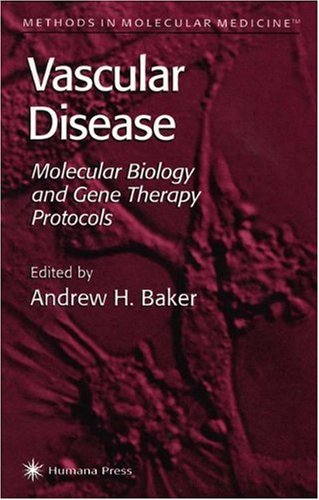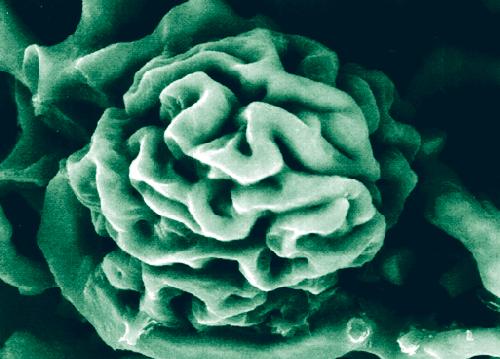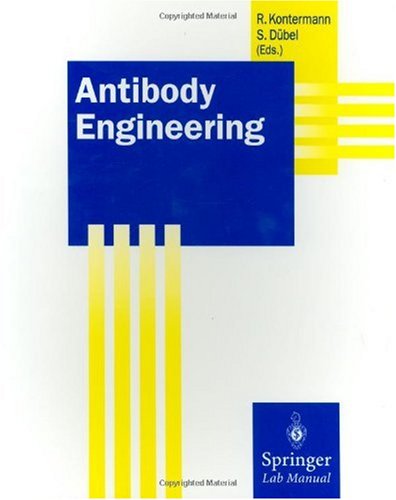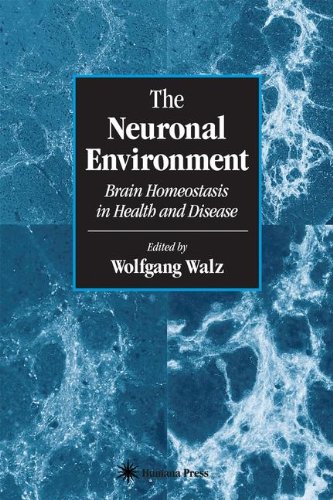Hong-Wen Deng, Hong-Wen Deng, Hui Shen, Yongjun Liu978-981-270-472-6, 981-270-472-8
Table of contents :
Preface……Page 6
Acknowledgments……Page 8
Contents……Page 10
1. INTRODUCTION……Page 14
2. THE NUMBER (PROPORTION) OF ALLELES SHARED IBD……Page 15
3.1. The Original Haseman–Elston Regression……Page 20
3.2. New Regression-based Methods……Page 21
3.3. Regression-based Linkage Methods for Any Type of Pedigree Structure……Page 25
4. DISCUSSION……Page 27
ACKNOWLEDGMENTS……Page 29
REFERENCES……Page 30
1. INTRODUCTION……Page 34
2. ADMIXTURE MAPPING……Page 35
3. HIDDEN MARKOV MODEL……Page 39
5. MARKOV CHAIN MONTE CARLO (MCMC) APPROACH……Page 40
6. INFORMATIVE MARKERS FOR ANCESTRY……Page 41
7. POWER OF ADMIXTURE MAPPING……Page 42
8. APPLICATION……Page 43
9. LIMITATIONS……Page 44
10. CONCLUSIONS……Page 45
REFERENCES……Page 46
1. INTRODUCTION……Page 50
2.1. Shared Frailty Models Based on Random Sample of Families……Page 52
2.2. Multivariate Frailty Models……Page 53
2.3. Familiar Aggregation Based on Case-Control Family Design……Page 54
3.1. The Cox Gene Model for Gene Segregation……Page 55
3.2. Cox Model with Major Gene and Random Environmental Effects for Age of Onset……Page 56
4. SURVIVAL ANALYSIS METHODS FOR LINKAGE ANALYSIS……Page 57
4.1. Construction of Genetic Frailties for Sibship……Page 58
5.1. Survival Analysis Methods for Family-based Association Tests……Page 61
5.2. Test of Genetic Association in the Presence of Linkage……Page 62
6. SURVIVAL MODELS FOR HAPLOTYPE EFFECTS BASED ON COHORT, CASE-COHORT, AND NESTED CASE-CONTROL DESIGNS……Page 63
6.2. Test of Haplotype Association for Case-Cohort and Nested Case-Control Designs……Page 64
7. SURVIVAL ANALYSIS METHODS FOR GENE CHARACTERIZATION……Page 67
8. ASCERTAINMENT CORRECTION……Page 68
9. SURVIVAL ANALYSIS METHODS IN THE GENOMICS ERA……Page 69
10. CONCLUSION AND FUTURE DIRECTIONS……Page 70
REFERENCES……Page 71
1. INTRODUCTION……Page 78
2.1. Basic Analysis Methods……Page 80
2.2.1. Candidate Gene Studies……Page 82
2.2.2. LD-based Gene Mapping……Page 83
2.2.3. Characterizing Established Disease Genes……Page 86
3.1.1. Cohort-Control Design……Page 87
3.1.2. Case-Control Design……Page 88
3.2. Family-based Studies: Family Member Controls and the Transmission/Disequilibrium Test……Page 89
4. GENOMIC CONTROL AND STRUCTURED ASSOCIATION……Page 90
4.1. Genomic Control……Page 91
4.2. Structured Association……Page 92
5.1. Power and Sample Size……Page 93
5.3. Common versus Rare Variants……Page 95
5.4. Multiple Testing Corrections……Page 97
5.5. Uncertainties in Phenotyping……Page 98
5.6. Future Outlook……Page 99
REFERENCES……Page 101
5 Tag SNP Selection and Its Applications in Association Studies Kui Zhang and Fengzhu Sun……Page 108
1. INTRODUCTION……Page 109
2. METHODS FOR HAPLOTYPE BLOCK PARTITIONING……Page 111
3. METHODS FOR TAG SNP SELECTION……Page 117
4. POWER OF ASSOCIATION STUDIES USING TAG SNPs……Page 122
5. COLLECTION OF REFERENCE SAMPLES……Page 124
6. DISCUSSION……Page 128
REFERENCES……Page 129
6 Haplotype Inference and Association Analysis in Unrelated Samples Zeny Feng, Nianjun Liu and Hongyu Zhao……Page 136
1. INTRODUCTION……Page 137
2. HAPLOTYPE INFERENCE……Page 138
2.1.1. Clark’s Algorithm……Page 139
2.1.2. The Pure Parsimony Approach……Page 141
2.2. Statistical Approaches……Page 143
2.2.1. EM Methods……Page 144
2.2.2. Bayesian Methods……Page 145
2.3. Some Extensions and Other Methods……Page 147
3.1.1. Regression Models for Unphased Haplotypes……Page 152
3.1.2. Score Statistics for Haplotype Analysis……Page 156
3.2. Haplotype Sharing and Clustering……Page 157
4. DISCUSSION……Page 161
REFERENCES……Page 164
1. INTRODUCTION……Page 174
1.1. Genetic Backgrounds……Page 175
2. HAPLOTYPE INFERENCE FROM PEDIGREE DATA……Page 177
2.1. Maximum Likelihood Approach……Page 178
2.2. Recombination/Crossover Minimization……Page 179
3. HAPLOTYPE INFERENCE FROM POPULATION DATA……Page 181
3.2. Perfect Phylogeny Model……Page 182
3.4. Maximum Likelihood……Page 183
3.5. Bayesian Approaches……Page 185
4. HAPLOTYPE INFERENCE FROM POOLED SAMPLES……Page 186
5. SOFTWARE AVAILABLE ON THE WEB……Page 187
REFERENCES……Page 188
1. INTRODUCTION……Page 192
2.1. Formation of DNA Pools……Page 195
2.2. SNP Genotyping Methodologies……Page 196
2.3. Estimation of Allele Frequency……Page 197
3.1.1. The Case of Unrelated Population Data……Page 198
3.1.2. The Case of Family Data……Page 200
3.2.1. The Case of Unrelated Population Data……Page 201
3.2.2. The Case of Family Data……Page 203
4. HAPLOTYPE-BASED ASSOCIATION STUDIES USING DNA POOLING……Page 204
5. ASSOCIATION STUDIES USING DNA POOLING IN THE PRESENCE OF GENOTYPING ERRORS AND CONFOUNDERS……Page 206
5.1.1. Single Marker–based Association Studies for Qualitative Traits……Page 207
5.1.2. Single Marker–based Association Studies for Quantitative Traits……Page 208
5.2. Association Studies in the Presence of Confounders……Page 209
6. DISCUSSION……Page 211
ACKNOWLEDGMENTS……Page 213
REFERENCES……Page 214
1. INTRODUCTION……Page 222
2.1. Introduction……Page 223
2.2. Linkage Disequilibrium Generated by Gene–Gene Interactions……Page 224
2.3. Measure of Interaction between Genes……Page 227
2.4. Relationships between Interaction Measure and Traditional Quantitative Genetic Effects……Page 228
3.1. Linkage Disequilibrium Generated by Interaction between Two Unlinked Loci……Page 229
3.2. Indirect Interaction between Two Unlinked Marker Loci……Page 231
3.3. Test Statistic……Page 232
3.4. Patterns of Pairwise LD under Two-Locus Disease Models……Page 234
3.5. Pairwise Interaction Measure……Page 235
3.6. Null Distribution of Test Statistics……Page 236
3.7. Power Evaluation……Page 239
3.8. Application to a Real Data Example……Page 241
4. COMPOSITE MEASURE OF LINKAGE DISEQUILIBRIUM FOR DETECTION OF INTERACTION BETWEEN TWO LOCI……Page 245
4.1. A General Model for Interaction between Two Loci Including Two Genes at the Same Gamete or Di.erent Gametes……Page 246
4.2. Indirect Interaction between Two Unlinked Marker Loci……Page 249
4.3. Test Statistic……Page 250
4.5. Application to a Real Data Example……Page 252
5. CONCLUSIONS……Page 256
Appendix A……Page 258
Appendix B……Page 259
Appendix C……Page 260
Appendix D……Page 263
REFERENCES……Page 264
10 Association Tests for Complex Disease Genes While Controlling Population Stratification Shuanglin Zhang and Qiuying Sha……Page 268
1. INTRODUCTION……Page 269
2. ASSOCIATION TESTS IN A HOMOGENEOUS POPULATION……Page 270
2.1. Qualitative Traits……Page 271
3. REASONS FOR FALSE-POSITIVE RESULTS IN THE PRESENCE OF POPULATION STRATIFICATION……Page 273
4.1. GC Approach……Page 274
4.2.1. STRuctured population Association Test (STRAT) (Method of Pritchard et al.9)……Page 275
4.2.2. Similarity-based Association Test (SAT) (Method of Zhang et al.8)……Page 277
4.2.3. Quantitative Similarity-based Association Test (QSAT) (Method of Zhang and Zhao10)……Page 279
4.3. Semiparametric Test (SPT)……Page 280
4.3.2. SPT Statistic……Page 281
4.3.3. QualSPT Statistic……Page 283
4.3.4. Smoothing Parameter h……Page 284
5.1. Computation Simplicity of SPT Method……Page 287
5.2. Haplotype-based Methods in a Structure Population……Page 289
5.3. Other Topics……Page 291
ELECTRONIC DATABASE INFORMATION……Page 292
REFERENCES……Page 293
1. INTRODUCTION……Page 298
2. ANIMAL MODELS……Page 299
3. CROSS DESIGNS……Page 300
4. GENETIC ARCHITECTURE OF COMPLEX TRAITS……Page 302
4.2. Epistasis……Page 303
4.3.1. Size of a QTL……Page 305
4.3.3. Identification of Genes Using Positional Cloning……Page 306
5.1. Linkage Marker Map……Page 307
5.2. Population……Page 308
6.1. Analysis of Variance……Page 309
6.2. Interval Mapping……Page 310
7. MULTIPLE QTL MODELS……Page 313
8. BAYESIAN MODEL SELECTION FOR MAPPING MULTIPLE QTLs……Page 315
9. MAPPING QTLs FOR BINARY AND ORDINAL TRAITS……Page 316
9.1. Prior and Posterior Distributions……Page 318
9.2. The Markov Chain Monte Carlo Algorithm……Page 319
10. MAPPING QTLs FOR CONTINUOUS TRAITS……Page 322
10.1. Prior Distributions……Page 323
10.2. The Markov Chain Monte Carlo Algorithm……Page 326
11. POSTERIOR ANALYSIS……Page 329
REFERENCES……Page 330
1. INTRODUCTION: ADVANTAGES AND LIMITATIONS OF USING ANIMAL MODELS……Page 338
2.1. Principle of QTL Mapping……Page 342
2.2. QTL Mapping Using F2 Populations of Mice……Page 347
2.3. QTL Mapping Using Recombinant Inbred Lines……Page 348
2.4. Tanscriptome-QTL Mapping……Page 350
2.5. Transgenic and Knockout Mice……Page 351
2.5.1. Transgenic Mice……Page 353
2.5.2. Knockout Mice……Page 355
2.5.3. N-Ethyl-N-Nitrosourea (ENU) Mutagenesis Mouse Models……Page 356
2.5.4. Applications of Genetically Engineered Mice……Page 358
REFERENCES……Page 361
13 Acquisition of Accurate Gene Expression Information from Microarray Measurements Shuang Jia, Shouguo Gao, Martin J. Hessner and Xujing Wang……Page 364
1. MICROARRAY TECHNOLOGY: POTENTIALS AND PROBLEMS……Page 365
2.1. Matarray Package……Page 367
2.2. Array Fabrication and TDAV……Page 368
2.3. Efficiency of TDAV in Spot-Level QC……Page 370
2.4. Data Filtering and Quality-Dependent LOWESS Normalization……Page 372
2.5. QC Pipeline……Page 373
2.6. Improvement in Measurement Quality……Page 375
3. QUALITY-WEIGHTED STATISTICS AND DATA MINING……Page 376
4.1. Spotted Oligonucleotide Arrays……Page 380
4.2. A.ymetrix Microarray Platform……Page 381
REFERENCES……Page 383
1. INTRODUCTION……Page 388
2. HISTORICAL PERSPECTIVE……Page 390
3.1. Affymetrix Technology……Page 391
3.2. Inkjet Printing Technology……Page 392
3.3. Maskless Array Synthesizer (MAS)……Page 393
4. ADVANCES IN SPOTTED ARRAY TECHNOLOGIES……Page 394
4.1. Glass Slide Substrates……Page 395
4.3. Spotting Pins……Page 396
5. ALTERNATIVE DNA MICROARRAY TECHNOLOGIES……Page 397
6.1. Gene Expression Profiling……Page 398
6.3. Array CGH16……Page 399
6.4. RNA interference (RNAi) Cell Microarrays 20……Page 400
6.5. Regulatory Network Mapping 21……Page 401
6.6. Diagnostics and Personalized Medicine……Page 402
6.8. Special Applications of DNA Microarrays in the Identification of Genetic Mutations……Page 403
7. SUMMARY……Page 406
REFERENCES……Page 407
15 Expression Quantitative Trait Locus (eQTL) Mapping Song Huang, David Ballard, Zheyang Wu and Hongyu Zhao……Page 410
1. INTRODUCTION……Page 411
2. CHALLENGES AND METHODS……Page 412
2.1. Microarray……Page 413
2.2. Multiple Trait Analysis……Page 414
2.3. Joint Linkage Probability of eQTL……Page 417
2.4. Bayesian Methods Based on Markers……Page 420
2.5. Automated and Efficient Mapping Strategies……Page 423
2.7. QTL Detection Refinement……Page 425
2.8. Gene Regulatory Network Reconstruction……Page 427
3. CASE STUDIES……Page 428
4. FUTURE DIRECTIONS……Page 436
REFERENCES……Page 439
1. INTRODUCTION……Page 446
2.1. Transcription Modules Defined by Genetic Variations — Bridging Genotype and Phenotype……Page 448
2.2. Inferring Causal Pathways from QTLs to Phenotypes with Bayesian Network……Page 450
2.2.2. Structural Constraints……Page 451
2.2.3. Model Discovery……Page 452
2.2.4. Model Averaging……Page 453
3. PREDICTING THE EFFECTS OF GENETIC AND TRANSCRIPTIONAL INTERVENTIONS……Page 454
4. TESTING CAUSAL PATHWAY MODELS USING CROSS-VALIDATION……Page 457
REFERENCES……Page 458
17 Functional Proteomics and Its Application in Biomedical Sciences Guishan Xiao and Teri Zhang……Page 462
1. INTRODUCTION……Page 463
2.1. Protein Fractionation……Page 464
2.1.1. Ultrafiltration……Page 465
2.1.2. Liquid-Phase Isoelectric Focusing……Page 466
2.1.3. Depletion of High-Abundance Proteins……Page 467
2.2.1. Gel-based Techniques — Polyacrylamide Gel Electrophoresis (PAGE)……Page 469
2.2.2. Gel-Free System — High-Performance Liquid Chromatography (HPLC)……Page 473
2.3. Protein Detection……Page 474
2.3.2. Gel Staining……Page 475
3.1. Introduction……Page 477
3.2.2. Immobilized Metal Ion Affinity Chromatography (IMAC)……Page 478
3.2.3. Multidimensional Protein Identification Technology (MudPIT)……Page 479
3.2.5. Nanoelectrospray Ionization Liquid Chromatography/Tandem Mass Spectrometry (nanoESI LC-MS/MS)……Page 480
3.2.6. Matrix-Assisted Laser Desorption/Ionization–Tandem Time-of-Flight Mass Spectrometry (MALDI-TOF/TOF MS)……Page 482
3.2.8. Fourier Transform Ion Cyclotron Resonance (FT-ICR)……Page 483
4. PROTEIN MICROARRAY (PMA)……Page 484
5. PROTEOMIC DATA ANALYSIS……Page 486
6. VALIDATION TECHNOLOGIES……Page 487
6.1. Tissue Microarray of Immunohistochemistry (TMA IHC)……Page 488
6.3. MS-based Validation……Page 489
7. PROTEOMIC APPLICATION……Page 490
7.1.2. Platelets……Page 491
7.1.3. Plasma……Page 492
7.2.1. Saliva……Page 494
7.2.3. Bronchial Alveolar Lavage Fluid (BALF)……Page 495
7.2.4. Nipple Aspirate Fluid (NAF)……Page 496
7.3. Tissue……Page 497
7.4. Population Proteomics……Page 498
8. FUTURE DIRECTION OF PROTEOMICS……Page 499
REFERENCES……Page 501
18 An Introduction to Biomedical Informatics Hai Hu and Michael N. Liebman……Page 512
1. CLINICAL PERSPECTIVE……Page 514
1.2. Handling of Protected Health Information……Page 515
1.3. Clinical Data Collection……Page 519
1.4. Clinical Specimen Collection and Biobanking……Page 520
2. GENOMIC AND PROTEOMIC PERSPECTIVES……Page 521
3.1. Background……Page 525
3.2. To Develop or to Buy?……Page 527
3.3. Challenges……Page 528
4. DATA FORMAT STANDARDS AND DATA INTEGRATION OR FEDERATION……Page 529
4.1. Clinically Collected and Laboratory-Generated Data……Page 530
4.2. Clinical, Genomic, and Proteomic Data in the Public Domain……Page 531
4.3. Data Format Standards……Page 533
4.4. Approaches for Data Integration or Federation……Page 535
5. ANALYTICAL APPLICATION DEVELOPMENT AND INTEGRATION……Page 537
6. EXAMPLES: BIOMEDICAL INFORMATICS FOR TRANSLATIONAL RESEARCH……Page 541
6.1. Cancer Biomedical Informatics Grid……Page 543
6.3. The Clinical Breast Care Project: Hypothesis-Generating Analysis Using the Co-occurrence of Pathology Diagnoses Made on the Same Breast……Page 544
ACKNOWLEDGMENTS……Page 546
REFERENCES……Page 547
1. INTRODUCTION……Page 552
2.1. Mass Spectrometry (MS)……Page 555
2.3. Yeast Two-Hybrid System……Page 558
2.5. Two-Dimensional Polyacrylamide Gel Electrophoresis (2D PAGE)……Page 559
3. DATABASE RESOURCES FOR PROTEIN INTERACTIONS……Page 560
3.3. MPPI: MIPS (Munich Information Center for Protein Sequences) Mammalian Protein–Protein Interaction Database……Page 562
3.6. HPID: Human Protein Interaction Database……Page 563
4. COMPUTATIONAL METHODS AND PROTEIN INTERACTIONS……Page 564
4.1. Prediction of Protein–Protein Interactions……Page 567
4.3. Assessment of Protein Interaction Data Using Network Properties……Page 568
5. BIOLOGICAL SIGNIFICANCE OF PROTEIN INTERACTIONS……Page 569
REFERENCES……Page 572
20 Genomic Cloning in the Postgenome Era Yan Jiao and Weikuan Gu……Page 576
1. LOCALIZATION OF CANDIDATE GENES ON A GENOMIC MAP……Page 578
2. HIGH-THROUGHPUT SCREENING OF GENE MUTATIONS……Page 580
3. GENOMIC EXPRESSION……Page 584
4. CONFIRMATION OF CANDIDATE GENES……Page 586
5. PROBLEMS AND FUTURE DIRECTIONS……Page 590
REFERENCES……Page 591
1. INTRODUCTION……Page 594
2.1. Transcription……Page 596
2.2. RNA Processing……Page 597
2.2.1. Processing of mRNA……Page 598
2.2.2. Maturation of rRNA and tRNA……Page 599
2.2.4. RNA Editing……Page 600
2.3. mRNA Transport and Localization……Page 601
2.4. Translation……Page 602
2.5. mRNA Degradation……Page 603
2.6. RNA Damage and Quality Control……Page 606
2.7. microRNA: Formation and Function……Page 608
3. DISEASES RELATED TO RNA METABOLISM……Page 609
3.1. Human Cancers and Splicing……Page 611
3.2. ALS and Insufficient RNA Editing……Page 612
3.3. WS4/PCWH Syndromes and NMD……Page 613
3.4. Fragile X Syndrome and BC1 RNA Localization……Page 614
3.5. RNA Oxidation in Association with Age-Related or Genetic Diseases……Page 615
3.6. Interferon-Activated RNA Degradation and Prostate Cancer (RNase L)……Page 616
3.7. Diseases Caused by Mitochondrial tRNA (mt tRNA) Defects……Page 617
3.7.2. MELAS and mt tRNA Modification……Page 618
3.8. MicroRNAs and Diseases……Page 619
3.9. Regulation of Gene Expression and Age-Related Neurodegeneration (DNA Microarray)……Page 620
4. CONCLUDING REMARKS……Page 621
REFERENCES……Page 622
22 Recent Progress in the Genetics of Osteoporosis Hui Shen, Yong-Jun Liu, Peng Xiao, Dong-Hai Xiong and Hong-Wen Deng……Page 630
2. CANDIDATE GENE ASSOCIATION STUDIES……Page 631
2.1.1. VDR……Page 632
2.1.2. ER-α……Page 635
2.1.3. COL1A1……Page 636
2.2.1. MTHFR……Page 637
2.2.2. IGF-I……Page 638
2.2.3. IL-6……Page 639
2.2.5. SOST……Page 640
2.3. Summary……Page 641
3.1. BMD and Osteoporotic Fractures……Page 642
3.2. Bone Structure or Bone Size……Page 644
3.4. Summary……Page 645
4. QTL MAPPING IN ANIMALS……Page 646
5.1. DNA Microarray Studies……Page 649
5.2. Proteomics Studies……Page 652
6. SUMMARY……Page 653
REFERENCES……Page 654
1.1. Wnt/β-Catenin Signaling……Page 668
1.2. LRP5 and Its Homolog……Page 669
1.3.1. LRP5 and OPPG……Page 670
1.3.2. LRP5 and HBM Syndromes……Page 671
1.3.3. LRP5 and BMD Variations……Page 672
1.4.1. Osteoblast: The Major Target of Wnt Signaling……Page 673
2.1. Runx2, a Bone-Specific Transcription Factor……Page 674
2.3.1. Runx2 in Osteoblast Proliferation……Page 676
2.3.3. Runx2 in Chondrocyte Hypertrophy……Page 677
2.3.4. Runx2 in Osteoclast Formation……Page 678
2.4.2. Posttranslational Control of Runx2……Page 679
2.5.1. Human Cleidocranial Dysplasia (CCD) Syndrome……Page 680
3.1. PTH/PTHrP and Their Receptors……Page 683
3.2. PTH: A Hormone with Dual Functions……Page 684
3.3. PTHrP: The Bone-Specific Peptide……Page 686
3.4. Genetic Disorders Caused by PTHR1 Mutations……Page 687
REFERENCES……Page 689
24 Genetic Factors for Human Type 1 Diabetes Cong-Yi Wang, Junyan Han and Jin-Xiong She……Page 706
1. INTRODUCTION……Page 707
2. HLA-ENCODED SUSCEPTIBILITY TO T1D (IDDM1)……Page 709
3. THE INSULIN GENE (IDDM2)……Page 714
4. PTPN22-ENCODED LYMPHOID-SPECIFIC PHOSPHATASE (LYP)……Page 716
5. SUMO4-ENCODED SUSCEPTIBILITY TO T1D (IDDM5)……Page 718
6. CTLA4 SURROUNDING REGION (IDDM12) TO T1D SUSCEPTIBILITY……Page 721
7. IDDM4 AND IDDM8: GENOME SCAN AND CONFIRMATION OF LINKAGE……Page 723
8. OTHER PUTATIVE T1D SUSCEPTIBILITY INTERVALS……Page 724
10. ASSOCIATION VERSUS LINKAGE: THE RIGHT CHOICE FOR FUTURE STUDY……Page 725
11. CANDIDATE GENES VERSUS GENOMEWIDE APPROACH: BACK TO THE FUTURE……Page 727
REFERENCES……Page 728
25 Genetic Susceptibility to Human Obesity Yong-Jun Liu and Hong-Wen Deng……Page 742
1. INTRODUCTION……Page 743
2.2. Knockout and Transgenic Models……Page 744
3.1. Monogenic Human Obesity……Page 745
3.2.1. Heritability……Page 746
3.2.3. Genomewide Linkage Screens……Page 747
3.2.4. Candidate Gene Association Studies……Page 748
3.2.5. Potential Reasons for Inconsistent/Conflicting Results in Linkage and Association Studies……Page 752
4. PROSPECTS FOR GENE DISCOVERY IN OBESITY……Page 756
4.1. Fine Mapping……Page 758
4.3. Gene Expression and DNA Arrays……Page 759
4.4. Proteomics……Page 761
5. OBESITY MANAGEMENT FROM A GENETIC PERSPECTIVE……Page 762
ACKNOWLEDGMENTS……Page 763
REFERENCES……Page 764
1. INTRODUCTION……Page 772
2. ESTROGEN BIOSYNTHESIS……Page 774
3. ESTROGEN HYDROXYLATION……Page 776
4. ESTROGEN CONJUGATION……Page 777
5. ESTROGEN BINDING AND RECEPTOR……Page 778
REFERENCES……Page 780
1. HEREDITARY SYNDROMES ASSOCIATED WITH BREAST AND OVARIAN CANCERS……Page 786
1.2. Cowden Syndrome (CS)……Page 787
1.4. Peutz–Jeghers Syndrome (PJS)……Page 788
1.6. HNPCC……Page 789
2.1. BRCA1……Page 790
2.2. BRCA2……Page 791
2.3. p53……Page 793
2.4. ATM……Page 794
3. HISTOPATHOLOGY AND PROGNOSIS OF FAMILIAL BREAST AND OVARIAN CANCERS……Page 795
3.2. Pathology of Breast Cancer with BRCA2 Mutation……Page 796
3.4. Pathology of Hereditary Ovarian Cancer……Page 797
3.6. Prognosis of Hereditary Breast Cancer……Page 798
3.7. Prognosis of Hereditary Ovarian Cancer……Page 800
4.1. Risk Assessment……Page 801
4.2. Genetic Counseling……Page 802
4.3. Psychosocial Issues Related to Predictive Testing for Breast and Ovarian Cancer Genes……Page 803
5.1.1. Close Observation……Page 804
5.1.3. Prophylactic Surgery……Page 805
5.2.2. Prophylactic Chemoprevention……Page 808
5.2.3. Prophylactic Surgery: Salpingo-Oophorectomy, Hysterectomy, and Tubal Ligation……Page 809
REFERENCES……Page 810
1. INTRODUCTION TO THE Wnt SIGNALING PATHWAY……Page 822
2. REGULATION OF THE CANONICAL Wnt SIGNALING PATHWAY……Page 823
3.1. β-Catenin Structure……Page 827
3.2. β-Catenin Mouse Models……Page 828
3.3. β-Catenin Mutation in Human Cancer……Page 829
3.4. Mutation-Independent β-Catenin Activation in Human Cancer……Page 831
4.1. APC Structure and Function in β-Catenin Regulation……Page 833
4.2. APC mutation in Human Cancer……Page 834
5.1. Axin Structure and Function in β-Catenin Regulation……Page 835
6. β-TrCP……Page 836
7. CONCLUSION……Page 837
REFERENCES……Page 838
1. INTRODUCTION……Page 846
2. WHAT IS AUTOIMMUNE DISEASE?……Page 847
3. GENETIC PREDISPOSITION TO HUMAN AUTOIMMUNE DISEASES……Page 850
4. MHC GENES AND AUTOIMMUNE DISEASES……Page 851
5. NON-MHC GENES LINKED TO AUTOIMMUNE DISEASES……Page 855
5.1. Predisposition and Problems……Page 856
5.2. Association of Multiple Genes with Autoimmune Diseases……Page 857
5.3. Epistatic Interactions of Susceptibility Genes……Page 859
5.4. Influence of Environmental Factors on Genetic Factors……Page 860
6. HYPOTHETICAL MODEL: RISK OF AUTOIMMUNE DISEASE VERSUS SUSCEPTIBILITY GENES……Page 862
7.1. Identi.ed Susceptibility Genes……Page 864
7.2. Are There Common Susceptibility Genes Among Autoimmune Diseases?……Page 867
7.3. Future Studies: How to Pinpoint Genes?……Page 868
REFERENCES……Page 869
1. INTRODUCTION……Page 878
2.1. Heritability of Alcohol Dependence……Page 879
2.2. Heritability of Drug Dependence……Page 880
3. GENOMEWIDE STUDIES……Page 881
3.1. Genomewide Linkage Studies of Alcohol Dependence……Page 882
3.2.2. Genomewide Linkage Study of Opioid Dependence……Page 883
4.1.1. Alcohol-Metabolizing Enzymes……Page 884
4.1.2. NPY……Page 885
4.1.3. GABRA2……Page 886
4.2.1. OPRM1……Page 887
4.2.2. DDC……Page 888
5. GENE–ENVIRONMENT INTERACTION……Page 889
REFERENCES……Page 890
1.1. Epidemiology of Insulin Resistance and Metabolic Syndrome……Page 896
1.2.1. Components of the Insulin Resistance Syndrome……Page 898
1.2.2. Insulin Resistance Is the Key Connector Between Obesity and Type 2 Diabetes……Page 899
1.2.3. Proinflammatory Factors and Other Components of IR Syndrome……Page 900
1.2.5. Measuring Insulin Resistance……Page 901
2.1.1. Genetics of Obesity……Page 902
2.1.2. Genetic Factors of Fasting Glucose and Risks of Type 2 Diabetes……Page 903
2.1.3. Serum TG as an Independent Risk Factor for Type 2 Diabetes and CVD……Page 904
2.1.4. Genetic Bases of Hypertriglyceridemia and Related Diseases……Page 905
2.1.5. Total Cholesterol, LDL, and CVD……Page 906
2.1.6. Genetic Factors and Hypercholesterolemia……Page 908
2.2.2. Single-Gene Mutations and MODY (Maturity-Onset Diabetes of the Young)……Page 909
2.2.4. Genetic Factors and Risks of MS……Page 910
3.1. Combined Phenotypes vs. Endophenotypes……Page 911
3.2. Moderate vs. Extreme Phenotypes……Page 912
3.3. Density of Linkage Mapping……Page 913
3.4.3. Detection of Linkage and LD Together……Page 915
3.4.4. Correction of Multiple Tests……Page 916
3.5.1. Haplotype Structure of the Human Genome and Measurements……Page 917
3.5.2. Power and Sample Size……Page 918
4.1.1. Statistical Methods for Gene–Gene Interactions……Page 919
4.1.2. Pathway-driven Gene–Gene Interactions……Page 920
4.2. Parent-of-Origin Effect and Gene Imprinting……Page 921
5.4. Validation of Statistical Associations and Interactions……Page 923
REFERENCES……Page 924
1. TRAFFIC JAMS IN EUKARYOTES……Page 942
2. INTRODUCTION TO HERMANSKY–PUDLAK SYNDROME (HPS)……Page 947
2.3. Pathogenesis……Page 948
3. POSITIONAL CANDIDATE CLONING OF HPS GENES……Page 949
4. GENES REGULATING THE BIOGENESIS OF LROs……Page 951
REFERENCES……Page 953
Author Index……Page 958
Subject Index……Page 960







Reviews
There are no reviews yet.